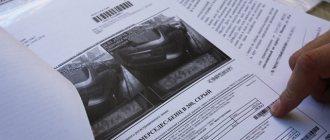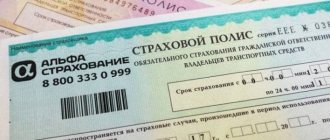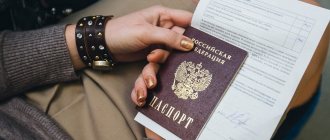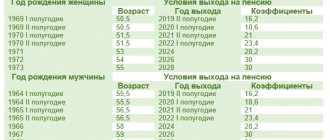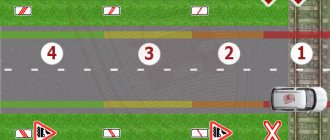The sidewalk is not intended for vehicular traffic. This section of the road is reserved exclusively for pedestrians or cyclists. But careless car owners quite often do not pay attention to this fact, parking their car directly on the pedestrian path. Meanwhile, parking a car on the sidewalk not only causes inconvenience for pedestrians, but also entails a number of administrative measures against the offender.
- Forced car stop
What is the fine for driving on the sidewalk in 2021?
The current amount of the traffic police fine for driving on the sidewalk in violation of traffic rules is 2,000 rubles. This punishment is regulated by Article 12.15 of the Code of Administrative Offenses of the Russian Federation, which is responsible for violations of the rules for the location of vehicles on the road.
The official interpretation of the sanctions under Part 2 of this article is as follows as of 2021:
2. Driving on bicycle or pedestrian paths or sidewalks in violation of the Traffic Rules shall entail the imposition of an administrative fine in the amount of two thousand rubles.
But please note that driving on the sidewalk is not always prohibited. That is why the official text contains a condition that traffic is carried out in violation of traffic rules.
So, if you are delivering cargo to a store or driving a car for a certain purpose, then this is an exception, and there should not be a fine according to the law. We'll talk about this a little below.
How to pay a fine
According to Part 1.1 of Art. 29.10 of the Code of Administrative Offenses of the Russian Federation, when a fine is imposed, the decision on an administrative violation shall indicate payment details and the amount of the fine. This information is enough to make the payment. This can be done in different ways:
- online in an Internet or mobile bank, through State Services (if you have an account on the portal);
- through an ATM or payment terminal;
- transfer at a bank branch
How much is the traffic police fine for parking on the sidewalk?
But there is a separate sanction for stopping or parking on this element of the road network. It can be either less or higher than for driving on the sidewalk. It all depends on the city in which the offense was committed.
So, for regions and cities, with the exception of Moscow and St. Petersburg, the fine for parking on the sidewalk is 1,000 rubles under Part 3 of Article 12.19 of the Code of Administrative Offenses of the Russian Federation:
3. Stopping or parking of vehicles at a pedestrian crossing and closer than 5 meters in front of it, with the exception of a forced stop and the case provided for in Part 6 of this article, or violation of the rules for stopping or parking vehicles on the sidewalk, except for the case provided for in Part 6 of this article , entails the imposition of an administrative fine in the amount of one thousand rubles.
The general rule also applies here that stopping on the sidewalk is not always prohibited. The traffic rules provide for exceptions when parking on it is allowed.
Expert opinion
Dmitry Tikovenko
Automotive law expert. 7 years of experience. Areas of specialization: civil law, disputes over compulsory motor liability insurance and road accidents
Driving on the sidewalk is prohibited and is punishable by a fine under Part 2 of Art. 12.15 of the Code of Administrative Offenses in the amount of 2,000 rubles, but there is an exception for cars that transport cargo or goods to retail outlets. If you have such a store, then you can drive up to it and unload. But immediately upon completion of the work, it will also be necessary to leave the sidewalk along the shortest route.
Particular attention should be paid to reversing; very often, due to the inattention of drivers or the carelessness of pedestrians, collisions with pedestrians occur, sometimes with fatal consequences.
Ask a Question
A separate amount if you left the car on the sidewalk in Moscow and St. Petersburg
As we indicated above, for the two capitals of Russia there is a separate fine for parking on the sidewalk. Its size is already 3 times higher than in other cities - 3,000 rubles under Part 6 of Article 12.19 of the Administrative Code.
Please note that the increased sidewalk fine is for the cities themselves. If you violated it in the Moscow or Leningrad region, then the amount will be 1 thousand rubles.
Will there be a parking lot?
Towing a car to a special parking lot depends specifically on what the fine is for:
- if you are charged under Article 12.15 of the Code of Administrative Offenses for driving on the sidewalk, then in this case evacuation to the impound lot is not provided for by law,
- if the fine is issued for parking on the sidewalk, then in this case the impound lot is legal (Article 27.13 of the Code of Administrative Offenses lists all articles of the Code under which the detention of a vehicle is applied).
Moreover, detaining a car is only possible if you are not at the wheel. The fact is that evacuation is not a punishment, but a security measure. That is, you have already been issued one fine for illegal parking on the sidewalk. And they take you to the impound lot in order to prevent further violations, and not to add problems to the car owner. Therefore, if you are there, you have the right to remove the car yourself.
In addition, if you managed to get to your car before it was taken away, you can also count on avoiding towing. Part 1.1 of Article 27.13 of the Code of Administrative Offenses prescribes that you must give the car back under the following conditions:
- you have all the documents for driving (driver’s license, vehicle insurance, you are included in the current compulsory motor liability insurance or it is unlimited),
- The tow truck with your car has not yet started moving towards the impound lot.
But the last condition does not always work in practice. Often, if your car has already been loaded onto a tow truck, it will not be returned to you. It is illegal. In this case, film what is happening (record specifically that the tow truck has not yet started moving) and appeal the actions of the traffic police officers.
You will also be interested in:
- Is it possible to stop if after the “No Stopping” sign there is a “Parking” sign and vice versa?
- Road sign “Parking prohibited” according to traffic regulations: what is the coverage area, where and who can park?
- What is the coverage area of the Disabled Parking sign?
What if you don't drive in, but the bumper is above the sidewalk?
In this case, the fine can be issued in a completely legal manner. Here, by analogy with the stop line, it cannot be crossed by a car - not just with a wheel, but with everything, any part of the car. Also, you can drive onto the sidewalk without a wheel - if any component of the car is located above it, then there will be a penalty.
After all, the rule was invented to ensure that there is no interference for pedestrians, but there is such an obstacle... Although, let’s say, in your case it may not exist, but what if the width of the sidewalk is 70-80 cm, and the overhang of the car is half a meter. Then pedestrians have only 20-30 cm left. And with a stroller there is nothing to do here at all!
Reasons for towing a car to the impound lot
The detention of a vehicle and its transportation to a specially designated guarded place is carried out on the basis of Article 27.13 as amended by Federal Laws No. 307-FZ of October 14, 2014, No. 69-FZ of April 21, 2011. The legal act states that a traffic police officer has the right to seize a car if it interferes with the movement of pedestrians.
Typically, a vehicle is detained if the driver has left his seat and is not nearby. To pick up a car, proceed as follows:
- Debt obligations are closed according to the assigned fine.
- Contact the traffic police for a certificate to return the car. The paper is issued to the owner on the basis of documents confirming ownership.
- They transfer funds for finding the car in the impound lot. Tariffs are set by local authorities.
- They pay for tow truck services and other expenses.
- Submit a certificate from the traffic police and relevant receipts confirming the payment of money.
When handing over the car, a report is drawn up in which claims or lack thereof regarding the appearance and damage to the vehicle are recorded.
Seizure of the car occurs at the discretion of the traffic police officer. The car is usually not towed if the driver quickly moves the vehicle from the scene of the violation.
Myths and fakes about trying to avoid punishment
Yes, before starting to explain this article about fines for driving or parking on sidewalks, we studied what they write on the Internet. And they write all sorts of information that is not reliable - moreover, it can be dangerous for the driver and lead, for example, to administrative arrest for failure to comply with the legal request of a police officer (Article 19.3 of the Administrative Code).
The following are the most common fakes today.
- Turning on the emergency lights means acquiring immunity to a fine. First, in addition to the hazard warning lights, you must have a warning triangle. Secondly, what kind of malfunction made you leave your car on the sidewalk?! Does this mean that you came here before the malfunction? The inspector will ask all these questions. Of course, no questions will arise if the car was thrown here as a result of an accident. But that's a completely different story! After all, you and I understand why you turned on the emergency lights... Please note that this is not immunity from auto-recording cameras that will record you. With a high degree of probability, you will be fined anyway. And then you will prove that you actually had a malfunction (again, forcing you to choose the sidewalk as a stopping place).
- If you managed to leave the sidewalk before the inspector approached you to punish you, then the fine will be illegal and can be avoided in this way. This is wrong! Police officers are given the right not only to stop (drive you off the sidewalk), but also to identify violations and punish them. Consequently, the policeman’s recording of the very fact of a violation gives him the right to issue a decree. You can leave, but then another sanction may be added - for failure to stop at the request of a traffic police officer. However, if you drove away while he was far from you and physically could not see his demand to stop, then the fine here will indeed be illegal.
- The inspector does not have video or photos of your violation. So what! Unfortunately, the keen eye of an employee is still indisputable evidence of your wrongdoing. The Supreme Court, indeed, once indicated that the inspector must have case materials confirming the driver’s guilt: photo or video materials, testimony of witnesses. However, in practice in 2021, you may be faced with the fact that when appealing a fine for a sidewalk only on the basis of a lack of evidence from the traffic police officer, the court will indicate that there is no reason not to trust the policeman, because he took the oath.
- If you are sitting in the car and your hands are on the steering wheel, then you can avoid a fine for parking on the sidewalk and insist on a penalty for driving. This is wrong. The traffic rules have a clear definition of stopping, and it consists of stopping the movement of the car, and not removing your hands from the steering wheel and, especially, leaving the car.
- Supposedly, you can avoid a fine if you say that you were urgently delivering medicine to a patient, rushing to a fire, and so on. And again this is a myth and fake. The Code of Administrative Offenses of the Russian Federation contains Article 2.7, which indicates extreme necessity as a basis for terminating proceedings in a case of violation. However, you simply cannot prove why you needed the sidewalk - for what such an urgent need! And it won’t be possible to “move out” on what was the shortest path. It is objectively easier to try to prove your innocence on the basis of Article 2.8. But there will be fewer consequences if you apply Article 2.9.
Why do car owners still violate and park on sidewalks?
There are several key reasons that force car owners to leave their cars on the sidewalk:
- Lack of parking spaces in the local area of apartment buildings. Not every person can afford to buy or rent a parking lot, but developers think differently. The courtyards are made narrow, and the number of parking spaces is significantly less than the number of apartment owners. At the same time, several family members can live in the apartment and, accordingly, there will be several cars;
- Lack of legal parking spaces near the vehicle owner's destination. This situation is especially relevant for large cities, where the number of vehicles is constantly growing, but the number of parking spaces is not increasing;
- Disrespect for pedestrians and disregard for traffic rules. Owners of expensive cars are ready to pay a fine for the sake of their convenience, so they prefer to drive them almost to the porch of the place they want to visit. However, owners of more modest cars can do the same;
- Ignorance of traffic rules. Some drivers believe that local areas are not public roads that are subject to regulations. Therefore, they park their cars on the sidewalks, believing that this will not lead to consequences.
So, parking on the sidewalk can be either a necessary measure or an indulgence of convenience. However, you should try not to block the passage of pedestrians. People have a rather negative attitude towards violators, post photos on social networks, causing public outcry, or send them to the traffic police so that the violator receives a fine. Proper parking will allow you to build friendly relations with neighbors and strangers, and will also save your budget.
Does the discount apply to these fines?
. The legislation in force in 2021 offers drivers, within 20 days from the date of the decision (not to be confused with the date of receipt or entry into force), to pay the amount of the sanction in the amount of half the amount with a 50% discount. There are also exceptions to this rule - the discount does not apply to some traffic police fines. But none of the measures of responsibility discussed above apply to them.
Thus, the sanctions will be as follows:
- fine for driving on the sidewalk - 1,000 rubles instead of 2 thousand,
- for parking on the sidewalk in Moscow and St. Petersburg - 1,500 rubles instead of 3 thousand,
- for stopping and parking on it in other cities and regions - 500 rubles instead of 1 thousand.
How to appeal
A decision on an administrative offense can be appealed by filing a complaint with the official who issued it (Part 1 of Article 30.2 of the Code of Administrative Offenses of the Russian Federation). This must be done within 10 days from the moment the offender receives a copy of the resolution (Part 1 of Article 30.3 of the Code of Administrative Offenses of the Russian Federation). The complaint should indicate circumstances that exclude or mitigate the driver’s guilt, for example:
- forced stopping of a car on the sidewalk to allow an ambulance to pass;
- loading and unloading on the sidewalk in the absence of other access to the outlet;
- the absence of obvious signs near the sidewalk, for example, a curb.
If you have been ticketed for parking or driving on a sidewalk, contact our attorney for help. He will advise you in detail on the current situation and tell you how to resolve it in the best possible way.
Subtleties of the Rules - what is a sidewalk?
It is part of the road, but not the carriageway. The traffic rules have a definition of a sidewalk.
According to the Rules, a sidewalk is a part of the road that is intended for pedestrians. Its integral attribute is that it must be adjacent to the roadway or bicycle path or be separated from them by a lawn.
It’s just that this term contains the main uncertainty, which we propose to talk about right now.
How to define it?
Can you reliably determine whether this is a sidewalk or a roadway?
But no way! The sidewalk does not have a special road sign that would designate it specifically, and there are no clearly defined boundaries. In a situation where it is not separated from the roadway - for example, by a hill or a curb, it is not possible to reliably determine its boundaries, as well as where and how to park.
Therefore, there can only be one piece of advice here: to avoid a fine for driving or stopping on the sidewalk, simply avoid driving or parking in places where you have doubts whether it is a sidewalk or not.
Is this the same as the curb?
No. But more often than not, you won't be able to tell the difference between the curb and the sidewalk without obvious signs. The side of the road is intended for stopping and parking, and in some cases, for driving; the sidewalk is not.
But their main difference is that the shoulder must be on the same level as the roadway, differ from it in the type of coating, or be separated by a solid marking line 1.2.
But the side of the road, which has a different type of coverage and is on the same level as the roadway
Sidewalk, curb and pedestrian path
A roadway is an element of the infrastructure of a populated area intended for traffic movement in one or both directions.
A sidewalk is a road structure designed for the movement of pedestrians and low-speed objects, such as wheelchairs or strollers.
In order not to initiate accidents and prevent injuries on the road, traffic areas for vehicles and pedestrians are usually separated. As a rule, a curb stone is used for this. Among other things, to prevent a car from hitting the pedestrian part of the road, it is raised a few centimeters. In particularly dangerous areas, it is also indicated by a metal fence.
Sometimes, to create a special urban environment, a sidewalk path is combined with a bicycle or automobile road. Therefore, in order not to get confused and move along the designated lane, you need to follow the road markings and signs.
Pedestrian path is an area with a 4.5 sign installed on it. It shows the beginning of a section of the road where traffic is carried out only by pedestrians. All other objects are strictly prohibited from moving in this place.
The action of the sign starts from the point of its location and stops at the intersection with a perpendicularly located road. The continuation of the pedestrian path is indicated by duplicating a similar sign.
The difference between these objects - a sidewalk and a pedestrian path - is that the first is used almost exclusively for the movement of pedestrians, and on the second, in some situations, vehicle traffic is possible. For example, it is allowed to ride bicycles, unload commercial vehicles at retail outlets, drive up ambulances, emergency vehicles, gas service vehicles, and other special vehicles.
When is driving, stopping and parking prohibited according to traffic regulations?
Above, we indicated the amount of traffic police fines for incorrect entry onto the sidewalk and driving along it. However, traffic regulations do not always prohibit this.
- Clause 9.9 of the Rules indicates that driving on sidewalks is prohibited. And he gives exceptions.
- Section 12 of the Traffic Regulations regulates the rules of stopping. So, 12.1 indicates where it is allowed, and 12.1 - in what cases it is possible to park a car on the sidewalk.
So, there are 2 exceptions to the traffic ban on this element of the road:
- if a road maintenance or utility vehicle is driving,
- if other types of vehicles need access for loading or unloading cargo, provided that the sidewalk borders the roadway (that is, not separated by a lawn), your route is the shortest, and there are no other access routes.
At the same time, you must not create a danger for pedestrian traffic. And this condition is already precedent. For example, if a driver hits someone on the sidewalk, he will be held accountable not only for an accident with a pedestrian (Article 12.24 of the Administrative Code), but this will automatically mean that he was prohibited from driving on this part of the road. Therefore, in addition, the officer will issue a fine for driving on the sidewalk.
Sidewalk parking
As a general rule, all vehicles should be parked parallel to the edge of the road surface. However, there are a number of signs that allow you to use part of the sidewalk for parking. They provide for partial or complete driving of a car onto a sidewalk element, for example, with the rear wheels or one of the sides.
Dear reader! Didn't receive an answer to your question? Our expert lawyers work for you. It's absolutely free!
- Moscow ext 152
- St. Petersburg ext 152
- All regions ext 132 (Toll free)
The parking space near the sidewalk may be marked with markings, but most often there are no markings. This leads to the problem that sometimes it is simply impossible to determine visually how far one is allowed to drive onto a part of the sidewalk.
If there are markings, but there are no sidewalk parking signs, then driving onto part of the sidewalk is equivalent to parking on it and is punishable.
When is curbside parking allowed?
We found out above that in general in 2021 you do not have the right to park on the sidewalk. Let us consider in more detail the situations when parking is permitted on this element of the road.
If there is a road sign with a sign
The organization of the road network on a specific section of the road can specially organize parking on the sidewalk. In this case, no less special sign is used. To be more precise, there are two of them:
- 6.24, indicating that parking is organized in this place,
- one of the plates 8.4.7, 8.6.2, 8.6.3, 8.6.6-8.6.9, which indicates how you can park the machine.
This is what they look like:
Signs permitting parking - signs that prohibit driving onto the sidewalk are marked with a cross.
But there is an exception to this permission. Only cars, motorcycles and mopeds can be parked using this method. And trucks are not allowed to drive onto it anyway. In addition, please note that we are talking about the border zone of the sidewalk and the roadway. That is, you do not have the right to drive deeper along the sidewalk and park there - that is, your stop on it should not form a basis for attracting a fine for driving on it.
Unloading and loading cargo
A rather paradoxical situation arises with sidewalk access to facilities for the delivery of goods. We indicated above that this is permitted subject to conditions. So, in paragraph 9.9 we are talking specifically about the access of vehicles, but not about stopping and parking. That is, the latter is still prohibited, since the traffic rules have a separate section responsible for parking rules, and section 9 regulates the location.
However, in practice, if you take advantage of this relaxation of clause 9.9 of the Rules, it is unlikely that the traffic police officer who arrives will fine you, since he simply will not think about this curiosity and flaw in the legislation.
Subtleties with other stopping prohibitions
Another important rule: if there is such a defect in a given area, when there is both permission to park and a ban on it, for example, sign 3.27 Stopping is prohibited, then the ban takes precedence, and you can quite legally be given a fine for illegal parking.
That is, for example, you are driving a car and see a combination of sign 6.24 with one of the signs allowing you to stop. But then it will still be prohibited in the following cases:
- if sign 3.27 was previously installed, prohibiting stopping here (and not interrupted by other traffic rules),
- when such parking is organized closer than 5 meters to the pedestrian crossing,
- or if it is closer than 15 meters to the stop of route vehicles,
- up to 5 meters before the intersection of roadways.
Is it possible to stop to disembark and pick up passengers?
No. There is no such exception or relaxation anywhere in the traffic rules. You have the right to drop off or pick up people at the edge of the roadway, including, for example, if there is a bus lane on the right (but it is not separated by continuous markings). But you can’t do this on the sidewalk.
What does the traffic regulations say?
The definition of a parking space for a vehicle has two meanings:
- equipped parking space on the basis of clause 1.2 of the traffic rules;
- stopping transport for a long period of more than five minutes.
The fine imposed depends on certain nuances that will determine the amount of the penalty.
In accordance with clauses 12.1-12.3, you can park:
- In designated parking pockets and parking spaces.
- On the edge of the roadway in one row.
- On the sidewalk, if there are signs 8.6.1 - 8.6.9;
It is also considered a violation to park trucks without permitting signs. Parking is carried out in accordance with all the rules, blocking the edge of the sidewalk and without interfering with passers-by.
Is it possible to drive onto the sidewalk in the courtyard?
No. There is a lot of debate among car law experts about the presence of roadways and roads in general as such in the adjacent territories. This is so because, according to the definition of traffic rules, this territory itself is adjacent to the road. Supposedly this excludes the fact that she herself has roads. And, if there is no road, then there is no sidewalk, or the entire adjacent one is one large (or small sidewalk).
However, paragraph 17.1 of the Rules clearly states that there are sidewalks in residential areas. Thus, the courtyards of residential buildings are subject to sections 9 and 12 of the traffic rules:
- you do not have the right to move on the sidewalk in the courtyard of a multi-story (or even private) building,
- It is prohibited to drive onto the sidewalk when parking at a courtyard entrance, and the 6.24 sign with one of the signs for this possibility is very rare.
Something else useful for you:
- Bus lane according to traffic rules and fines for driving and stopping on it in questions and answers
- What is the fine for a “Brick” sign at a gas station, how to avoid it and cancel it?
- Fine for non-working rear license plate light in questions and answers
General concepts
Most often, two concepts - a pedestrian path and a sidewalk crossing - are confused by drivers of motorcycles and cars. To better navigate, you need to remember that the sidewalk is not indicated by a separate sign. This road element exists parallel to the roadway. It can be separated from it by a curb, a lawn, or it can smoothly merge into it. Therefore, it is sometimes difficult for drivers to understand where it ends.
To avoid punishment, you must carefully monitor the road configuration. By visually analyzing the situation, you can see where the main road in the city continues and where the sidewalk begins.
With a pedestrian path, things are much simpler. A special road sign clearly shows where it begins. In the absence of a duplicate sign, its coverage area ends at the nearest intersection.
The passage is blocked by a pedestrian - what to do?
You can do whatever you want, since you are already violating. But you can’t allow even more violations - obviously, you can’t run over a pedestrian. Pushing him is also prohibited - if this leads to even soiled clothes for the latter, then these are already signs of an accident with all that it entails.
There are actually few options here:
- comply with the pedestrian’s demands to move out of his way (or from the sidewalk in principle, if it is, for example, “Stopham”),
- or call the traffic police and wait for their arrival (so that they will issue you a fine, yes, and allow you to leave the sidewalk in the shortest way for you, and not as the pedestrian said); however, they are unlikely to issue a warrant to a pedestrian.
Appeal
Parking on the sidewalk in the yard - where can I complain? Parking in residential yards is just as illegal as parking on the sidewalk .
If you suffer from such “rudeness” of drivers, you can complain to the regional traffic police . The algorithm of actions is as follows:
- photograph the offender from all sides so that the license plate number and the fact that the driver is absent are clearly visible;
- go to the website of the State Traffic Safety Inspectorate of the Russian Federation ;
- fill out the application form , to which you must attach photographic evidence and your data;
- send a complaint and wait for the result.
complaints against the traffic police decision.
What happens when you hit a pedestrian on the sidewalk?
Then, in addition to the sidewalk ticket, there may be a penalty depending on the consequences caused to the pedestrian. And there are many such consequences:
- if only property damage is caused, then you will have civil liability to compensate for this damage,
- if minor harm to health is caused, then the punishment will follow under Part 1 of Article 12.24 of the Code of Administrative Offenses with a fine of 2.5-5 thousand rubles or deprivation of rights for 1-1.5 years,
- for moderate damage to the health of a pedestrian on the sidewalk, the fine will be from 10 to 25 thousand or imprisonment for 1.5-2 years,
- but for grievous harm, or if a pedestrian died, or there were several of them, including if you were drunk, you face criminal liability up to and including long-term imprisonment.
How can traffic police officers prove this offense?
If a traffic police officer spots a car parked on the sidewalk, a fine is inevitable. The receipt will arrive in the mail along with a photo of your iron horse parked in the wrong place. And that's the best case scenario. In the worst case, the car will be sent to the nearest impound lot. The main evidence is photographs , witness statements or statements from disgruntled pedestrians . Read about what fines the traffic police impose on pedestrians themselves here.
HELP If you see a tow truck approaching your car , you have the right to drive it to another location, but still have to .
The tricks of the traffic rules allow the traffic police to issue a fine to every violator standing on the sidewalk.
In case of protest, you will have to challenge the decision. You can renounce the issued fine if you take advantage of the following loopholes in the law:
- if you were holding the steering wheel, then you can insist on driving on the sidewalk ;
- a hopeless situation had arisen ; it was impossible to do otherwise;
- there were no obvious signs at the sidewalk ;
- unexpected car malfunction .
In any of the above cases, the fine will be removed or reduced . But if the employee has completed everything according to the rules, then he will have to fork out the money. Therefore, taking into account all the costs incurred, in some cases it is more profitable to use paid parking.
Summary table of fines for 2021
So, let’s summarize and present in a convenient tabular form all the violations and punishments on our topic.
All fines and penalties for violations on the sidewalk
| Violation | Punishment |
| Driving on the sidewalk in violation of traffic rules | Fine 2,000 rubles |
| Driving on the sidewalk bordering the roadway in order to deliver the cargo to the object along the shortest route | No penalty |
| Stopping and parking on the sidewalk in violation of the Rules | 1,000 rubles for all cities except Moscow and St. Petersburg |
| Parking on the sidewalk in Moscow or St. Petersburg | 3,000 rubles |
| If parking is permitted by sign 6.24 with one of the signs, but prohibited by sign 3.27 | 1 thousand or 3 thousand for Moscow and St. Petersburg |
| Collision with a pedestrian causing minor injury | A separate fine for the sidewalk and separately under Part 1 of Article 12.24 - from 2.5 to 5 thousand or deprivation of rights for 1-1.5 years |
| Collision with a pedestrian with moderate damage to health | A separate fine for the sidewalk and separately under Part 2 of Article 12.24 - from 10 to 25 thousand or deprivation of rights for 1.5-2 years |
| For serious harm or death of one or more pedestrians | Article 264 of the Criminal Code of the Russian Federation with penalties ranging from restriction of freedom up to 3 years to imprisonment for 15 years (if 2 or more people died as a result of an accident and the driver was drunk) |
Amounts of fines and payment terms
After a penalty is imposed, the citizen is given 1.5 weeks to appeal the decision and 2 months to complete the transaction. This issue is covered by Article 32.2 of the Code of Administrative Offenses of the Russian Federation.
As already mentioned, the amount of recovery is 1000 rubles. for regions, 3000 rub. for residents of Moscow and St. Petersburg.
If the violator makes a transfer of funds to the recipient in the first 20 days after drawing up the protocol, he will be given a 50% discount. This point is spelled out in paragraph 1.3 of Article 32.2 of the Code of Administrative Offenses of the Russian Federation. In this case, the amount of the penalty for the regions will be 500 rubles, and for drivers in Moscow and St. Petersburg – 1500 rubles.
When a citizen does not pay the fine within the prescribed period, the punishment is increased. The issue is covered in Article 20.25 of the Code of Administrative Offenses of the Russian Federation, as amended by Federal Law No. 410-FZ of December 6, 2011.
According to this legal act, evasion of administrative responsibility leads to the following consequences:
Related Posts
Amount of fine for lack of technical inspection in 2021
- A fine of two times the original value is imposed. For violators from the regions, the amount will be 2,000 rubles; residents of the capital, St. Petersburg, will have to pay 6,000 rubles.
- Imprisonment for up to 2 weeks.
- Mandatory work up to 50 hours.
How and where to complain about a violator?
If you see a car parked illegally and want to complain about the violator, then we have bad news for you. In most cases this will not lead to punishment. The fact is that after you send an application to the traffic police, the latter’s employees will be obliged to call the owner of the car for questioning in order to establish who was driving. This is not auto-recording, and therefore identification of the driver is mandatory here.
So, the owner is not even obliged to appear at the request of the traffic police. But even if he comes, he can say that it was not he who parked the car on the sidewalk, and will not say who did it, citing his constitutional right not to testify against himself and his loved ones.
Also, do not forget that in this case the person against whom the case has been initiated may become aware of you as the applicant. He has the right to get acquainted with all the materials of the case at the traffic police, and your data will appear there.
In general, there are 2 ways to complain about a violator:
- by submitting an application to the traffic police, or via an online application; at the same time, it is desirable for you to provide photo or video materials as evidence of a violation with a clear display of license plate numbers, and better yet, the driver’s face (in this case, the likelihood that he will be issued a fine for illegal parking on the sidewalk is much higher),
- through a special application in Moscow and a number of other cities, which is essentially equivalent to auto-fixation; but there is a problem with this application - it is not entirely legal according to the Supreme Court of the Russian Federation.
Who has the right to fine?
The fine is issued exclusively by traffic police officers. The procedure for recording an offense may be different:
- The inspector independently detects a car parked in the wrong place and draws up a report. Photo and/or video recording is made as evidence.
- The traffic police department receives readings from stationary surveillance cameras, on the basis of which protocols are drawn up.
- Parking officers and inspectors of the Moscow Administrative Road Inspectorate are also given the right to issue fines for illegal parking.
- Other citizens, for example, pedestrians themselves, can initiate penalties. In order to punish the driver, you need to send a photo of the parking violation to the traffic police.
Is it possible and how to challenge a sidewalk fine?
You can file a complaint in any case – it’s free and won’t take much time. You can appeal a sidewalk fine within 10 days from the date of receiving a copy of the resolution (regardless of whether it was received from a camera or issued by a traffic police inspector). And the complaint must be sent to the head of the inspector who issued the decision or to the district court at the place of the violation.
Here is a sample complaint to submit to any of the departments. In it you need to outline the essence of the violation, the circumstances of the fine, set out the evidence of your innocence and state specific requirements in the form of canceling the decision.
We have a special article with complete instructions and all the reasons for canceling a traffic police fine.
Evading a fine
Of course, you can deviate from the fine. To do this, you will need within 10 days . By the way, this can also be done online. But first, it would be a good idea to find out how employees record violations - suddenly, in your situation, an appeal will be a pointless waste of time .
The fact is that it is rare that traffic police officers are nearby at the time of the violation, which is why it is
sometimes quite difficult to impose a punishment .
However, if the driver’s maneuver came into the inspector’s field of view, the main evidence may be video recording, which, unfortunately, is very difficult to argue with.
However, if you are sure that you are right , you will need to prove that you had no other way to enter the territory.
Residents of provincial cities, where the quality of roads and pedestrian areas leaves much to be desired, can challenge the fine by proving the absence of markings and other identifying signs - the absence of a curb or green zone .
If you cannot prove that you are right, but you are confident in it and for you this is a matter of principle , you can contact a lawyer. Although the amount of payment for their services will clearly be higher than two thousand rubles.
Procedure for challenging a decision
If the driver does not agree with the imposed penalty, he can protest it. The procedure is performed in two ways:
- file a complaint with the head of the traffic police, whose officer issued the fine;
- apply to the court.
In the first case, a person is given 10 days to write a complaint to the traffic police. The appeal is made in any form. The paper states:
- name of the authorized body to which the complaint is sent;
- personal data – full name, registration address, place of residence;
- contact information;
- information about the Russian passport;
- number of the decision made;
- essence of the requirement;
- date of writing the application;
- signature.
The complaint must be accompanied by an identification document, a copy of the protocol, as well as documentary evidence of innocence.
To appeal a decision through the traffic police, proceed as follows:
- Make a claim.
- Collecting evidence. They provide a certificate from the service confirming the breakdown, from a medical institution about treatment, photographs from the parking place where a sign permitting parking is visible, etc.
- A set of papers is formed.
- The package is handed over to the traffic police.
The documentation is submitted to the traffic police in person or through a legal representative with a power of attorney certified by a notary. There is no provision for challenging the decision online. The time for consideration of a claim is 10 days. The applicant receives a response in writing.
If the driver receives a notice of debt obligations after 1.5 weeks or more, the period for appealing the decision through the traffic police expires. To restore the period of time for appealing the fine, a petition is submitted to the head of the traffic police. After this, the procedure is carried out in the specified order.
When a negative verdict is issued on an application, the Russian is allowed to appeal the decision in court. You need to go there if the driver is sure that he did not commit the offense for which he was punished.
To appeal a fine in court, proceed as follows:
- They fill out an application.
- They collect a package of documents and evidence of innocence.
- Submit a set of papers to the authorized body.
- The claim is pending.
If a positive decision is made on a person’s application, he is released from the fine. When a negative verdict is issued, the Russian is obligated to pay the full amount of funds for collection. Legal costs are added to the assigned amount.
A fine for parking on the sidewalk is imposed on drivers for violating Article 12 of the Traffic Rules. The amount of the penalty depends on the region. The largest sanctions against citizens are applied in Moscow and St. Petersburg. In areas the size is much smaller. To reduce the amount of debt obligations by half, you need to pay the fine within 20 days after drawing up the act.
Lawns
At the federal level, there is no regulation of such an issue as parking on a lawn - neither in the Code of Administrative Offenses, nor in the Traffic Regulations, even the very concept of “lawn” is not designated in any way.
However, this does not mean that motorists can park their cars in this area - penalties for this kind of parking are still provided, but the specific amount of the fine depends on the region.
For different categories of violators, a range of fines can be distinguished:
- individuals will pay from 3 to 5 thousand rubles ;
- officials responsible for the operation of the vehicle - from 5 to 40 thousand rubles ;
- for legal entities, the fine will range from 50 to 150 thousand rubles.
The only exception to the rules is those cars that are used for planting and repairing plants - such cars will not be fined.
Places to stop
When operating a car, it is worth distinguishing between concepts such as parking and stopping. The difference between them is the time that the car can stand without moving - after 5 minutes the stop becomes a parking lot.
When a violation is detected, traffic police officers observe the driver’s behavior - if he does not remove his vehicle from a prohibited place within 5 minutes, this becomes the basis for imposing a fine.
Recording of events and time usually occurs using special technical means that have been appropriately tested and can be used for such purposes.
For late payment of a fine, additional punishment is imposed (Part 1 of Article 20.25 of the Code of Administrative Offenses):
- another fine in double the amount of the unpaid amount;
- compulsory work lasting up to 50 hours;
- administrative arrest for up to 15 days.
In addition, as of July this year, a new sign 8.9.1 was introduced, which indicates parking spaces intended only for drivers with special permits. Such permission is issued by executive authorities and is valid in the territory of the region where it was received.
When to pay and how to save
If you do receive a fine and it is fair, you will have to pay. In the first twenty days after the ruling, you have the opportunity to pay the fine with a 50% discount.
Check fines
The second way to save money is to reduce the fine in court. In court you will have to prove that parking was justified by extreme necessity. For example, you unloaded a car or let utilities pass while they were working.
It is not possible to receive a discount on a fine in all cases. For example, the car was not registered. In this case you will have to pay in full.
Yards
There are rarely special parking spaces in the courtyard area, which does not prevent many car owners from leaving their cars there. This zone includes an area that is limited on several sides by residential buildings and includes green spaces, playgrounds and places for people to relax. In courtyards it is prohibited:
- parking with the engine running for more than 5 minutes;
- truck parking;
- driving cars on sidewalks and pedestrian paths;
- parking a car on lawns and sidewalks (except for specially designated areas).
Responsibility for these violations is specified in Art. 12.28 of the Administrative Code and consists of imposing a fine of 1,500 rubles. (3000 – for Moscow and St. Petersburg). If, as a result of parking, the car blocks the passage for fire equipment, this is also grounds for a fine:
- for citizens – 1500-2000 rubles;
- officials - 7,000-10,000 rubles;
- legal entities – 120,000-150,000 rubles.
At the same time, the residents of the houses themselves can file complaints about the car with the traffic police inspectors - after the driver receives a warning, he must remove the car, otherwise he will be fined.
Where to complain to passers-by or residents of the house
Checking the correctness of stopping cars in yards by inspectors of the State Traffic Inspectorate is carried out extremely rarely. If a vehicle is left in a prohibited place or interferes with the passage of pedestrians/other vehicles, then residents of the house can independently report the violation.
You can complain:
- at the traffic police department. In almost all regions of the Russian Federation, traffic police hotlines operate where you can report an offense. You can find out the telephone number of the local hotline on the traffic police website or by calling the help desk
- to the district administration. Systematic violations of parking rules can also be considered by local authorities
- to the district unit of the Ministry of Internal Affairs or the district police officer
Moscow residents can also contact MADI or file a complaint through the “Spot” or “Active Citizen” mobile applications.
In St. Petersburg, you can file a complaint with the ADI.
In order to prove the guilt of a driver, it is recommended to take a photo, including a photo with a mobile phone camera, before contacting the competent authorities.
In two rows
Another common violation of the rules is parking cars in two rows, that is, parallel to other standing cars. In most cases, such actions are prohibited because they directly interfere with other road users.
Parking in two rows is only possible if there are special permission signs for this. In other cases, you need to park the car parallel to the roadway (but sometimes it is allowed at an angle). For this violation there is also a fine of 2,000 rubles. (Part 4 of Article 12.19 of the Administrative Code), as well as evacuation of the car to the impound lot.
Near bodies of water
Movement and parking in areas near water bodies is regulated by the Water Code of the Russian Federation. In accordance with Part 4, Clause 15, Art. 65 of the RF CC, parking of cars near water bodies is prohibited if:
- there is no paved road or special area on the shore;
- the car is located within the border of the water protection zone.
These boundaries are also established by the Water Code of the Russian Federation (Article 65) and depend on the type of reservoir:
- for rivers and streams up to 10 km long, the water protection zone is 50 m;
- length from 10 to 50 km – 100 m;
- length over 50 km – 200 m;
- for lakes and reservoirs – 50 m;
- for seas – 500 m.
The distance is measured from the border of the coastline. Violation of the established distance entails the imposition of an administrative fine in accordance with Part 1 of Article 8.42 of the Administrative Code:
- citizens – 3000-4500 rubles;
- officials - 8,000-12,000 rubles;
- legal entities - 200,000-400,000 rubles.
Since the amount of the fine is rather large, it is better to play it safe and leave the car as far as possible from the body of water, especially if its type and extent are not known exactly.


